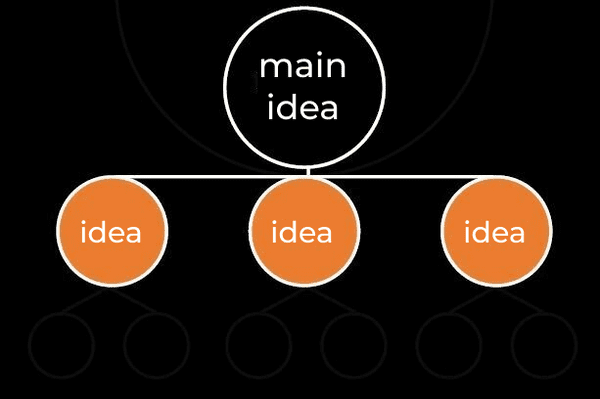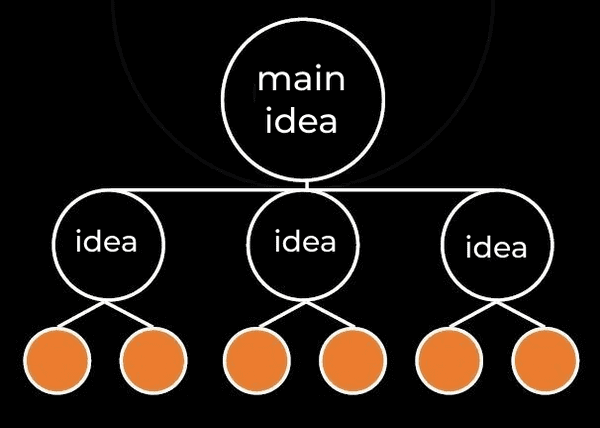3 Cool Frameworks for Soft Skills’ Development in IT and Other Fields
According to LinkedIn statistics, communication is a weak place in many segments of business. I’m going to show you these statistics and give three specific frameworks to improve your speaking skills.
Hey, my name is Madi Shahrur and IT specialists were mostly my clients in the last 6 years. Cool communication skills were a push factor in their career.
The International Economic Forum in Davos determined that soft skills were key for all business sectors in 2020. The large LinkedIn 2018 report shows that the biggest gap for specialists of any level is communication.
The problem is that it’s hard to measure the level of any soft skill. That’s why, in different industries, there are different points of view on how professional you’re supposed to be in one or another soft skill.
The International Economic Forum in Davos determined that soft skills were key for all business sectors in 2020. The large LinkedIn 2018 report shows that the biggest gap for specialists of any level is communication.
The problem is that it’s hard to measure the level of any soft skill. That’s why, in different industries, there are different points of view on how professional you’re supposed to be in one or another soft skill.
Nowadays, the reality shows us that we have to pay special attention to soft skills. In their basis there are some general algorithms and universal structures.
When Do You Need Soft Skills?
The issue of communications usually arises before preparing for speeches at conferences, pitches to investors, meetups, and negotiations. There are more communication tasks with the development of flat organizational structures that are implemented through agile approaches. The trend towards automation, so far, makes it necessary for us to interpret the data and convince the team of your conclusions.
А specialist’s ability to cope with these tasks determines their so-called rating in a team, in a company or in an industry.
My team and I suggest dividing all communication skills in 2 groups. The first one is about presentation skills, the other is about interactive skills.
Presentation skills are always connected to your soliloquy-type orations. It’s all about monologue when you have to describe the product, prove your choice or solution.
Presentation skills are always connected to your soliloquy-type orations. It’s all about monologue when you have to describe the product, prove your choice or solution.
How to Develop Your Presentation Skill?
Cool persuasive speech consist of 3 parts:
Cool persuasive speech consist of 3 parts:
1. The structure
2. The argumentation
3. The speech emphases
2. The argumentation
3. The speech emphases
1) The Structure
The least successful strategy for preparing for a speech is to write a long text with complex sentences, and then memorize it in front of a mirror. The structure helps to build your speech up based on the meanings and emphasis that the audience will pick up.
The structure answers the questions:
We at BEsmart are evangelists of the pyramidal structure of speech. It was invented at McKinsey and adopted as a communication standard in many business sectors around the world. The pyramid structure can be used for science-intensive defenses with huge chunks of code, inspiring speeches at meetings and in tête-à-tête interviews. This is a hierarchical structure, where all elements are built from the general to the particular, from the most important to the details.
The first thing you need to do to build the structure is to understand what you are going to convince the audience. The goal of a speech is never «to inform» because no one listens to a speaker to become a little more informed. People listen to you to solve their problems, to find out that your technology is the most effective one, to understand that you are suitable for working in their company. You should highlight your main idea.
The main idea breaks down into 2 or 4 ideas that support it — not more, so the pyramid remains stable and goes to the main conclusions that will prove the main idea.
The second level is the level of ideas, or criteria of proof. Two questions will help you find relevant ideas:
The structure answers the questions:
- What are the elements of speech?
- Why does it consist of these elements?
- Where are these elements located and why?
- How are they related?
- What will the listeners remember when they leave the conference/meetup etc.?
We at BEsmart are evangelists of the pyramidal structure of speech. It was invented at McKinsey and adopted as a communication standard in many business sectors around the world. The pyramid structure can be used for science-intensive defenses with huge chunks of code, inspiring speeches at meetings and in tête-à-tête interviews. This is a hierarchical structure, where all elements are built from the general to the particular, from the most important to the details.
The first thing you need to do to build the structure is to understand what you are going to convince the audience. The goal of a speech is never «to inform» because no one listens to a speaker to become a little more informed. People listen to you to solve their problems, to find out that your technology is the most effective one, to understand that you are suitable for working in their company. You should highlight your main idea.
The main idea breaks down into 2 or 4 ideas that support it — not more, so the pyramid remains stable and goes to the main conclusions that will prove the main idea.
The second level is the level of ideas, or criteria of proof. Two questions will help you find relevant ideas:
- What do I have to prove, so people agree with me?
- Will the evidence of these ideas be enough to make a decision?

Remember, naming ideas is not proving them. Therefore, each of the ideas of the second level breaks down into a couple more proofs, or “illustrations”. Rational and emotional forms can be used here: studies, tables and diagrams, examples, facts and stories. It depends on the context.

Only now, when we see our main idea and all the supporting ideas, we can move to preparation of introduction:
- Describe the situation: in what context your idea appeared, how does it look like “in our time” or “in our field”
- Track the development of the situation: indicate what problem arises in the proposed context, find a barrier relevant to the audience.

Check your speech structure based on the three rules of the pyramid:
Check your speech structure based on the three rules of the pyramid:
- The ideas of each level should generalize the ideas grouped by the level below
- Ideas in each group should always be interconnected and of the same type
- The ideas in each group should go in a logical sequence: from specific to general, in chronological order, or in some other way
2) The Argumentation
The Argumentation requires us to constantly answer the question “Why?” — it allows you to avoid cognitive distortions and guide the listener according to the logic that we use. We all overestimate our ability to draw conclusions from a set of facts and understand how other people think. To create a coherent argument, we use the method of ultimate meanings: for each statement, we ask at least three consecutive questions “Why?”
3) The speech emphasis
Story boarding is a technique that we took from video production and use even when we don’t need any visualization. In fact, this is a table of three columns: speech structure, timing of each block, emphases.
For example, we are creating a pitch for investors, and we only have 5 minutes for it. We decided to talk about the team at the beginning of the speech. Now let’s try to understand “Why?”
The answer «because the sponsors suggested this» is not fantastic. We’re going to tell you about the team because this can be the reason for investors to notice us. Why? Because our team covers 100% of needed competitions.
So this way, we will check that the «team» argument logically leads us to the main idea — it is worth investing in our project. The specific “shared experience” emphasis that we found for the “team” argument will keep listeners from swerving their logic in unexpected directions.
For example, we are creating a pitch for investors, and we only have 5 minutes for it. We decided to talk about the team at the beginning of the speech. Now let’s try to understand “Why?”
The answer «because the sponsors suggested this» is not fantastic. We’re going to tell you about the team because this can be the reason for investors to notice us. Why? Because our team covers 100% of needed competitions.
So this way, we will check that the «team» argument logically leads us to the main idea — it is worth investing in our project. The specific “shared experience” emphasis that we found for the “team” argument will keep listeners from swerving their logic in unexpected directions.
It is the emphasis that we will show in a compressed speech and decompose into slides in a presentation if it’s necessary.
We can see the clear timing of each block, based on the overall structure and the required length of the performance. This will allow you to change and rehearse speech in a modular way, rearrange the blocks in places without losing their meaning.
Perhaps, you need help with soft skills’ development?

